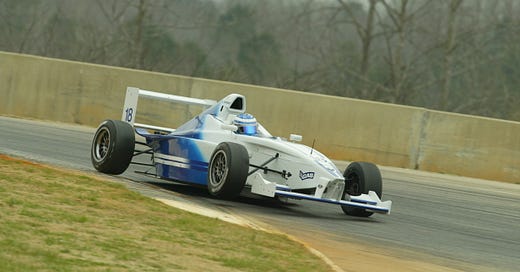Speed Secrets: Using Knowledge & Experience to Improve Your Driving
Domain knowledge, experimentation, and the mind of a beginner.
What’s the difference between a driver with five years of experience, and one with thirty years of experience? Twenty-five years of experience, right? More importantly, twenty-five years of domain knowledge. What does that mean?
According to Wikipedia: “Domain knowledge is knowledge of a specific, specialized discipline or field, in contrast to general knowledge, or domain-independent knowledge.”
Experience and domain knowledge are not a one-to-one relationship, though. It’s possible, for example, to gain two years of domain knowledge for each year of experience.
How? Study. Focus. Deliberate practice. Observation. Experimentation.
As my friend, Samir Abid, reminds me, “We learn more from experimentation than we do from experience.”
If you’ve done the same thing for ten years, what’s the likelihood of you performing better than someone who had practiced and experimented for five years? I can’t give you a definite answer, but I’ll take the experimentation approach over repeating the same thing over and over again for a decade.
Even though you likely cannot drive on track as much as you want, and therefore, can’t physically practice as much as you’d like, there are ways to increase your domain knowledge through observing at-track and through video, reading, being a student of various training programs, reviewing your own data and video, and receiving instruction and coaching.
In Malcolm Gladwell's book, Blink, he shares the story of the legendary tennis coach Vic Braden. Braden surprised himself with the ability to predict – with almost 100% accuracy – when a player would double-fault a serve. He could tell strictly from the player’s toss of the ball (before they actually hit the ball). With enough study, observation, and practice, we're able to notice the smallest of cues – even ones we're consciously unaware of; Braden developed this through decades of focused practice.
How many tennis serves do you think Braden needed to observe before he was able to do this? Thousands. In fact, probably more like hundreds of thousands, and maybe even millions.
But – and here’s the important thing – it wasn’t casual observation that led to Braden’s ability. It was focused, intentional observation. He practiced observation.
As a coach, I’ve told my driver over the radio to carry 2 MPH more speed though a corner, and then a few laps later tell him that he did it. After the session, reviewing data, we’ll see that he did pick up his minimum speed by 1.8 MPH. Okay, I was 0.2 of a MPH off in my observation, but it sometimes even surprises me that I can see that. Of course, I’ve watched many tens of thousands of cars drive through corners, and I’ve done that in a very focused way.




